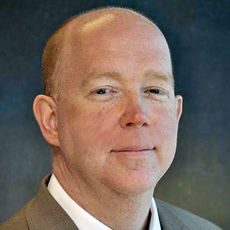
The number of U.S. healthcare REITs looking for opportunity to invest abroad may be increasing. As the selection of domestic, high-quality healthcare real estate portfolios in seniors housing, acute care facilities and medical office buildings tapers, a number of REITs are acquiring foreign assets as a way to grow, further diversify their investments and expand their international presence and pipeline for new opportunities. While this trend is fairly new, there are important implications to consider on an industry and global scale.
Such international transactions are increasingly popping up across the healthcare real estate sector. In late September, Medical Properties Trust, Inc. acquired 11 rehabilitation hospital facilities in Germany, a deal valued at approximately $244.7 million. That same month, Griffin-American Healthcare REIT II Inc., a public non-listed real estate investment trust, made its first foreign purchase, a 44-facility seniors housing portfolio across the United Kingdom, for $472.2 million. Last year, Health Care REIT, Inc. and Chartwell Retirement Residences teamed up to own and operate a portfolio of 42 seniors housing and care centers valued at $952.2 million in Canada.
While there are many reasons that U.S. healthcare REITs may look overseas for opportunity, one of the biggest advantages of this strategy is portfolio diversity in high quality core assets. REITs are always seeking creative, new ways to expand and diversify their investments, and they currently have capital available to do so. While the growth of the available pool of domestic healthcare assets has recently been slowing, more affordable quality assets are becoming available in foreign markets. This makes international investment extremely attractive to industry professionals. With increased portfolio diversity comes a larger international presence and exposure to new, favorable markets. This not only opens U.S. healthcare REITs up to potential new acquisitions overseas, but also broadens their pipeline to future opportunities as new development occurs. This is especially true in emerging markets, where a shift away from multi-generational homes can be seen along with a growing aging population in addition to the deepening needs for new high quality acute care facilities in BRIC countries. Such an environment may provide an impetus for increased development.
While there are many advantages for U.S. healthcare REITs seeking opportunity abroad, other factors of such acquisitions are important to consider. First, investing in new markets always poses some degree of risk, and the REIT landscape overseas is no different. While U.S. healthcare REITs may be competitive players in foreign markets, they should also be prepared to react to and protect themselves from a less familiar market environment. When considering acquiring a potential asset, a balance of potential return versus the amount of market risk needs to be in place. Furthermore, U.S. healthcare REITs’ activity abroad may create competitive pressure for relatively expensive domestic properties. While this has yet to occur, it may be something to look out for in the coming new year.
REITs, armed with the necessary capital, are actively seeking opportunities to diversify, expand and best position their portfolios for success. While they must exercise the same caution that they would with any domestic acquisition, exploring opportunities overseas may pave the way to long-term prosperity for many U.S. healthcare REITs.
Material discussed is meant to provide general information and should not be acted on without professional advice tailored to your firm’s individual needs.
Jeff Walraven is an assurance partner at BDO USA, L.L.P.




